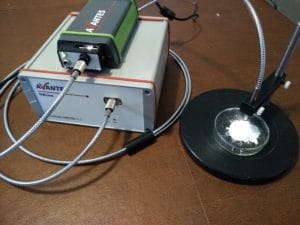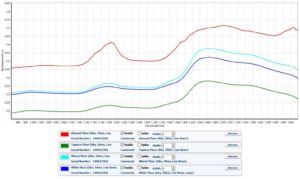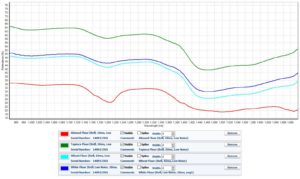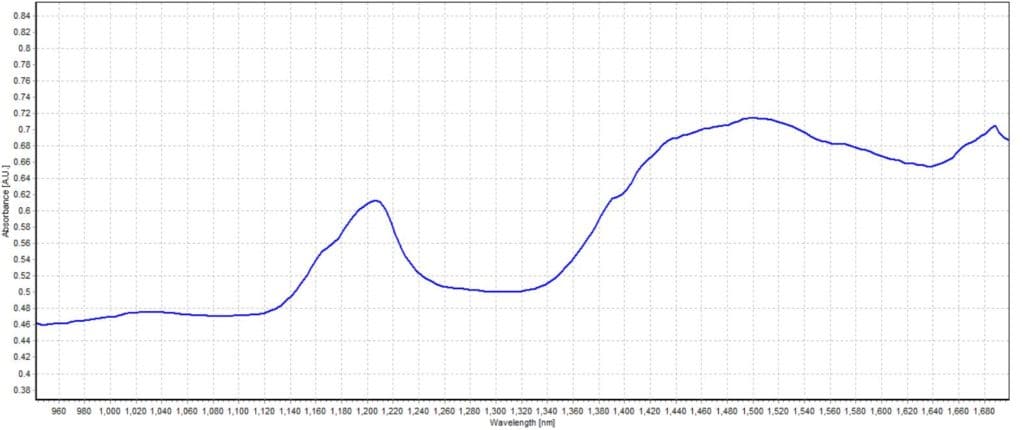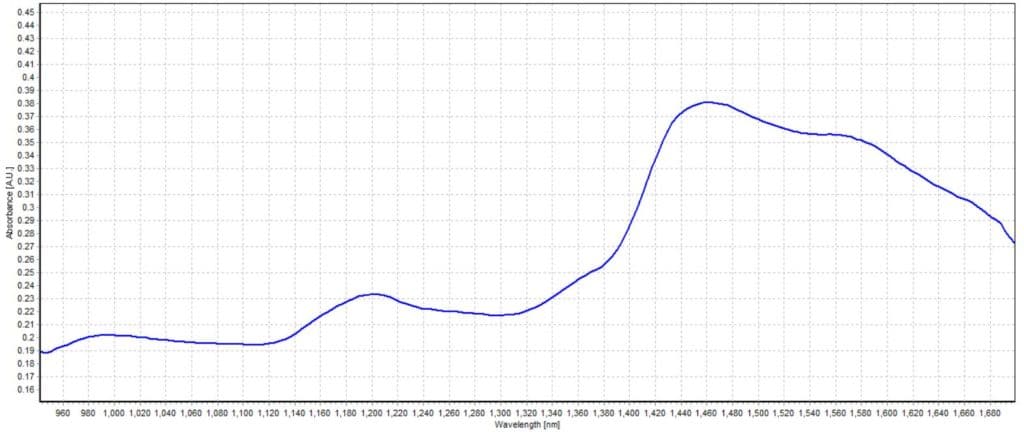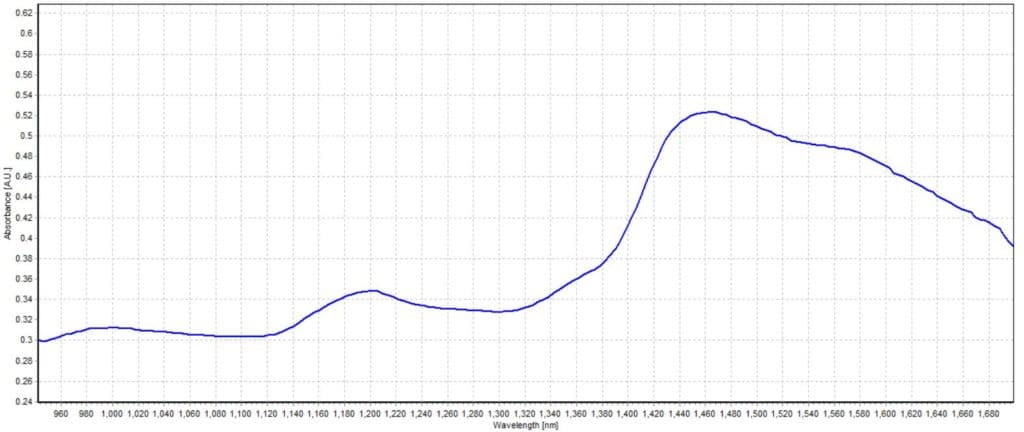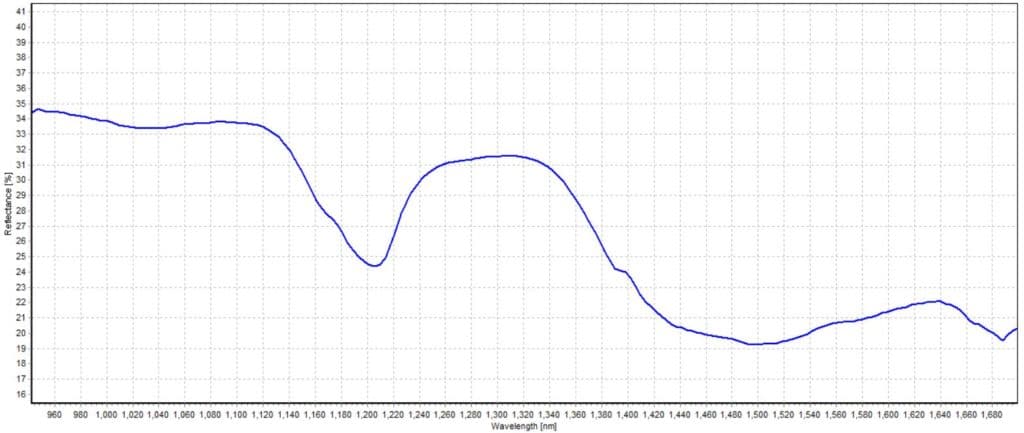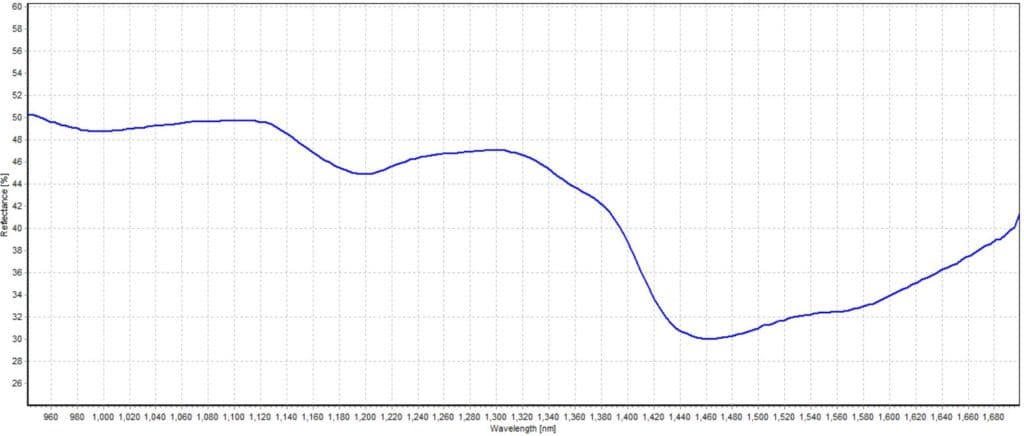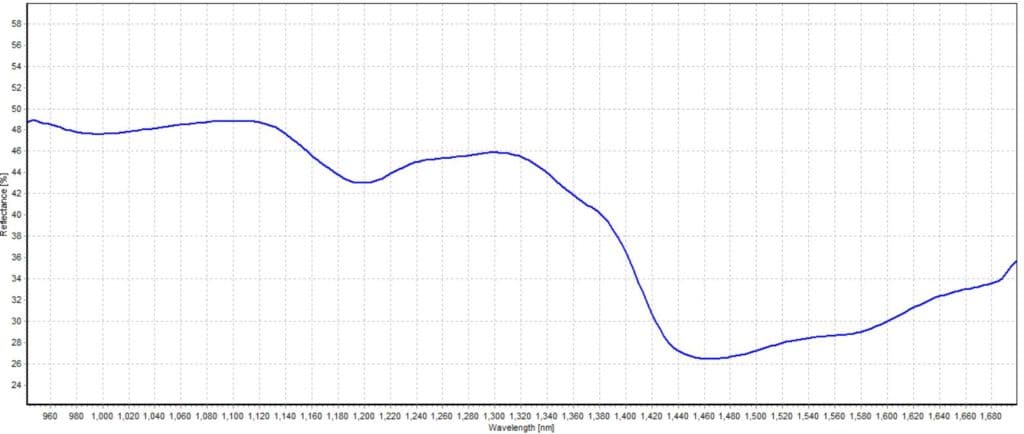Near-infrared Absorption and Reflection Chemometrics
Near-infrared Absorption and Reflection measurements can be used to determine the properties of various samples, such as concentrations of chemicals and the quality of plastics. Not only can absorption spectra be used to identify the characteristics of many types of samples, but it can also be used to characterize the unique spectra of each sample to generate a chemometric model. NIR spectroscopy is leading the way for the future of agriculture and food production for both qualitative and quantitative measurements. The same goes for reflection measurements. Reflection spectra can characterize the unique properties of various samples, such as grains, fruits, and plastics.
Conducted by: David Ademe, Avantes Inc.
Description of System:
A halogen light source is ideal for absorption and reflection measurements because of its power and good output in the NIR range, which is the wavelength range many researchers use to characterize consumables, such as grains and food products. This aids in revealing properties not observable with the naked eye. The halogen light source used in this testing is the AvaLight-HAL-S-Mini. From visible light to near-infrared, that’s where the AvaLight-HAL-S-Mini works best. It’s a compact, stabilized halogen light source, with adjustable focusing of the fiber connection, maximizing output power at the desired wavelength. The light source also has an adjustable output power to provide extra power or longer bulb life. The light source is connected via SMA termination directly to the illumination leg of a reflection probe. The reflection probe is fixed on our reflection stage to illuminate and measure the samples. The spectrometer leg of the reflection probe is connected via SMA termination to our AvaSpec-NIR256-1.7-EVO.
For measurements in the near-infrared range up to 1.7 µm, Avantes offers a new series of uncooled spectrometer configurations. The AvaSpec-NIR256-1.7-EVO and the AvaSpec-NIR512-1.7-EVO offer the same high-sensitivity optical bench, but with the next generation of electronics. Both instruments deliver the same exceptional performance specifications, such as a sample speed of only 0.53 ms/scan and integration times as fast as 10 µs. For applications where resolution is key, or more data points for modeling are required, the 512-pixel detector will be the best choice. The AvaSpec-NIR256/512-1.7-EVO spectrometers pair the same trusted InGaAs array detectors with our ultra-low-noise electronics board featuring USB3 and Giga-Ethernet connection port. Digital and analog I/O ports enable external triggering and control over the shutter and pulsed light sources and choose from two distinct software-controlled gain-setting modes, high-sensitivity mode (HS, default) and the low-noise mode (LN). The unit used in this testing is configured with a slit-50 and OSF-850.
Description of Near-infrared Absorption and Reflection Methodology:
For this experiment, we used the absorbance and reflection modes in AvaSoft. These modes are built to capture the absorbance of samples in absorbance units and the reflectance of samples in percent, respectfully.
Our setup will be used to measure the absorbance and reflection spectrum of four different types of flour: white flour, wheat flour, almond flour, and tapioca flour. Both the white and wheat flour types contain gluten, while the almond and tapioca flours are gluten-free. A WS-2 reflection tile will be used as our reference. With the tile, we will use this to optimize the integration time and averaging for the spectrometer.
Test Data and Results:
Displayed below is near-infrared absorption and reflection spectrum collected from the four grain samples.
Integration time: 10 ms
Averaging: 50
Individual Spectra
Analysis:
While each flour sample appears similar to one another at an initial look at the spectra, such as sharing the same peaks and valleys, it is visible that each sample has its own unique spectral fingerprint. Upon scaling the y-axis, it is clearly visible that each type of flour has a unique spectrum. The white flour and wheat flour samples both contain gluten, while the almond flour and tapioca flour are gluten free. For the next steps, it can be possible to put together a chemometric model for identifying gluten levels in the flours of baked goods and characterize the traits. Avantes frequently works with LabCognition and their software, Panorama, for these types of near-infrared absorption and reflection applications.
Conclusion:
In conclusion, the Avantes NIRLine of spectrometers provides a reliable and effective way of measuring many types of food samples and their ingredients. The accuracy of the NIRLine is a strong advantage in developing reliable chemometric models and for collecting reliable data. Additionally, the fit for use of NIRline instruments in process control environments is evident from the 10 ms integration time sample rate on diffuse flour samples. Avantes AvaSpec instruments also facilitate process control through the industrial communication protocols (Ethernet), onboard data processing capabilities and digital/analog I/O. Combined with the powerful capabilities of Panorama or other multivariate data modeling tools, a highly accurate model capable of predicting the levels of gluten in baked goods can be developed. In order to further improve this model, additional samples can be added to the calibration.
Contact an Avantes Applications Expert Now
Learn more about Near-infrared applications in your field.
 My Cart
My Cart 
